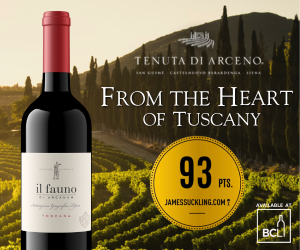It seems incredulous that a wine industry as young as British Columbia's would want to consider calling itself the New Okanagan, yet the slogan is catching on among a band of youngsters and oldsters up and down the valley.

It seems incredulous that a wine
industry as young as British Columbia's would want to consider calling itself
the New Okanagan, yet the slogan is catching on among a band of youngsters and
oldsters up and down the valley. The more you come to learn about the quiet
evolution of our wines the more the phrase "New Okanagan" makes a lot of sense.
In my view, there have been three
Okanagans. The original, historical Father Pandosy version and the planting of
vines in the Kelowna Mission District in the 1850s. Next was the important
Becker project back in the 1970s when we first tested the mettle of German
vinifera grapes and crosses such as Riesling, Gewürztraminer and Ehrenfelser to
see what would survive and ripen. In 1993 when the first plantings of red
grapes went in on Black Sage Bench in the south Okanagan, the third era began.
Now two decades later, the fourth milestone to make super-premium wines that
reveal the terroir of British Columbia may be the beginning of the New
Okanagan.
When we say super-premium, we mean the
absolute best. It is the kind of wine that competes globally and, if
successful, may not be seen so frequently here at home. Dragging established
producers forward to a whole new level won't be easy. The notion of great wine,
wine that turns heads globally is a huge stretch for some, especially those who
are selling all the wine they can make right now. But in a wine world awash in
commercial wines, made at prices we could never sustain for long, super-premium
is likely the only wine that will survive the test of time. It won't be easy.
At the current top end of wine, there is
a quiet style evolution running through the international wine world where the
top producers are chasing the less-is-more mantra. Some have been beating that
drum for years but it has taken a new generation of wine growing to really
support the notion that growing grapes naturally, with as little intervention
as possible, and following that through in the winemaking is the way to go.
Loud is out and contrary to current commercial trends of more sugar and big
flavours, the best wine in the world is slim or is slimming down to best
reflect its natural origins.
At Okanagan Crush Pad, a complicated
Summerland, B.C. project, the goal is just that. The winery was built to make a
variety of small-batch wines for a number of small vineyard owners in B.C. who
don't want to build a winery.
To that end, Okanagan Crush Pad (OCP) is
working with two world-renowned wine consultants who have fallen in love with
the Okanagan: Chilean Pedro Parra who studies terroir and geology around the
world and Alberto Antonini who makes wines with a sense of place on some of the
most important terroirs on the globe.
Last weekend, I returned to the Garnet
Valley in West Summerland to catch up with Antonini, Parra and OCP majority
owners Chris Colletta and Steve Lornie along with more than two dozen Okanagan
winemakers/viticulturalists and winery owners invited to visit the next
evolution in B.C. vineyards. OCP, on the advice of Parra and Antonini, have
purchased 300 acres of gently sloping land just above Giants Head in the Garnet
Valley about 10 minutes north of Summerland's Highway 97. The plan is to make
super premium Pinot Noir.
"The only way to make super-premium wine
is to have a great site," Antonini says. "If you look at the super-premium
wines of the world and what they are about, they are never about special
winemaking, special technology or special wood. They are always and only about
super-premium unique terroir.
My job is just to interpret a great place
and try to make, out of the grapes, the truest wine without changing its
character and its freshness."
To do that end Antonini needs a great
vineyard; enter Pedro Parra. Parra left his native Concepción, Chile as a
humble wine student and musician and spent six years in Burgundy trying to find
someone, anyone, who could to tell him how terroir really worked. It took time
and trust before he finally began to get the information he needed.
Two thousand, three hundred calicatas
(trenches) later, Parra is an expert on interpreting sub-soils and what they
may mean to any wine. He is building a global reputation for knowing how a
certain soil type translates into quality wine and what quality that might be
and how to link it to certain clones, or grape vines and then to a rootstock to
release its quality.
"Here we have something unique," Parra
says about the Okanagan.
"We are in the desert, but we have snow:
that means 'cold desert' which is really unique in the world of wine. So we
have the chance to do something really special, to make Pinot and Chardonnay
that no one has seen before."
Similarly after three years Alberto
says, "I really love this project ... in my career making wine all over the
world that is not always the way. But I really love to be here. I believe we
can achieve what we want -- to find the soul of the place."
These are big statements.
The pair are also fans of bio-dynamic
agriculture, a method of organic farming that emphasizes the holistic
development and interrelationships of the soil, plants and animals: a
self-sustaining system that emphasizes a sustainable approach to agriculture.
"All of the great wines of the world are
wines of place but while 'wine of place' is the market concept that everyone is
talking about, most are not really doing it," Antonini says.
He explains that if you want to make a
"wine of place," you must do three things: find the best place (hunt for the
best terroir); preserve the place or the terroir (or else you will only make
wine that has a sense of a destroyed place); do nothing that might diminish the
sense of place. This means that winemaking must be clean and simple. The use of
enzymes, commercial yeasts and nutrients must be avoided, and the wine handled
as little as possible or it will be a homogenized product with no sense of
place.
The first pieces of the puzzle are
coming together in Garnet Valley. The project will be a haven of bio-diversity,
in fact less than 20 per cent of the land will be planted, and the rest will be
left to cactus, indigenous grasses along with the birds and assorted wildlife
that were there long before any of us.
Antonini has come to learn that "the
biodynamic approach, building a holistic pyramid of biodiversity that includes
the native habitat surrounding the vines, creates wines that contain much
greater vitality. It is just common sense, they are more vital because they
come from a place which is richer and deeper in terms of biomass."
The New Okanagan may be a seminal moment in B.C. wine but like the Becker Project and the bold move to plant red wines in the south Okanagan in 1993, we will need at least two decades to know for sure.
Lagaria Pinot Grigio 2011, Veneto, Italy
Price: $15 (Everything Wine, FireFly) |
Score: 87/100
UPC: 726452001173
Ripe pear, apple skin, lemon,
matchstick, floral aromas. Round, dry, elegant but slightly lean with almond,
honey, red apple, citrus and lees flavours and a juicy finish. Solid effort
here.
Tantalus Riesling 2012, East Kelowna,
Okanagan Valley
Price: $23 (winery direct) | Score:
91/100
UPC: 626990067412
The Tantalus Riesling is at the extreme
end of freshness and acidity most years, all in a good way. Expect a pureness
of fruit with electric mineral floral citrus and tropical fruit notes perhaps
slightly tempered in 2012. The attack is crisp, the flavours exact and vibrant,
offering a mix of lemon, honey, lime and tangerine notes. Always a juicy,
mouth-watering style that excels with food.
Terravista Fandango 2012, Naramata
Bench, Okanagan Valley
Price: $29 (Everything Wine) | Score:
90/100
UPC: 00627843135265
Winemaker Senka Tennant launched this
unusual Albariño/Verdejo blend last year, and year two is equally tasty. She
tells me it's not easy to sell; to which I say help her out. This is one of the
most delicious white wines you will taste from B.C. this year. It's
aone-of-kind blend in Canada and a possible game changer for the Okanagan. Fandango
has a sense of electricity and freshness, juicy minerality and subtle floral,
melon and sage aromas and flavours.
Drouhin Vaudon Chablis Premier Cru
Vaillons 2011, Chablis, Burgundy, France
Price: $42 | Score 89/100
UPC: 0012086323614
Light honey, nutty lees, green apple,
nettle, grassy, citrus, matchstick aromas. Round, fresh, elegant, soft palate
with grassy, herbal, honey, butter, citrus and apple skin flavours with a bit
of seashell. Good ripeness and finesse for early drinking.
Blue Mountain Sauvignon Blanc 2011,
Okanagan Falls, Okanagan Valley
Price $18 | Score 88/100
UPC: 00626452801110
Love the open, bright, grassy, nettle,
grapefruit nose here flecked with lemon and light passion fruit aromas. The
palate is dry, fresh and juicy with more lemon, grassy, nettle, bell pepper and
grapefruit flavours. Elegant, excellent vibrancy and balance to pair with
lighter fish dishes. One of the best Sauvignon styles from the valley, it's a
mix of 70 per cent fermented in stainless steel and 30 per cent in barrels.
Mission Hill Limited Edition Viognier
2011, Okanagan Valley
Price: $22 (winery direct) | Score:
89/100
UPC: 776545028259
Wonderfully aromatic with green apple,
orange blossoms, tangerines wafting from the glass. Expect soft, supple
inviting textures, yet fresh and juicy. Love the lemon/peach notes and its
long, fresh creamy just-off-dry finish. It is a perfect match for spot prawns.

 quicksearch
quicksearch





